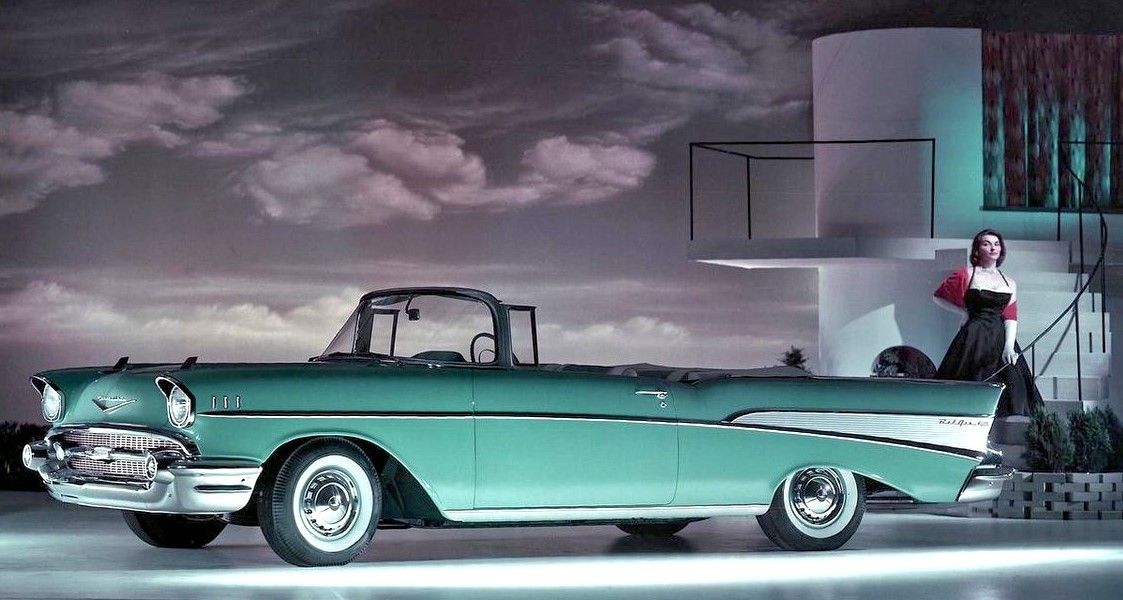
When you’re in the market for a car, whether new or used, the conversation often extends beyond flashy features or a sleek interior. The paramount question for many discerning buyers, particularly those envisioning long-term ownership, revolves around a vehicle’s heart: its engine. Can it genuinely endure the rigors of daily use and the passage of time? This fundamental reliability is what separates the legends of the automotive world from the “cautionary tales.”
Indeed, some vehicles have painstakingly earned a reputation for engine reliability that gracefully outlasts every other component. These are the models mechanics praise, seeing them roll into shops with hundreds of thousands of miles on the odometer, requiring little more than routine care. Brands like Toyota and Honda, for instance, have cultivated their standing around reliable engine design and durable construction, offering owners years of trouble-free operation with just basic maintenance.
However, the automotive landscape also presents a stark contrast. Certain cars unfortunately begin to exhibit serious engine problems long before they even reach the 80,000-mile mark. This premature decline can stem from design flaws, poor-quality materials, or a lack of proper engineering foresight. For consumers, understanding these tendencies is crucial, as it can significantly impact both purchasing decisions and long-term satisfaction. This guide aims to shed light on several compact cars known for early engine vulnerabilities, equipping you with knowledge to make a smarter choice and avoid regret.
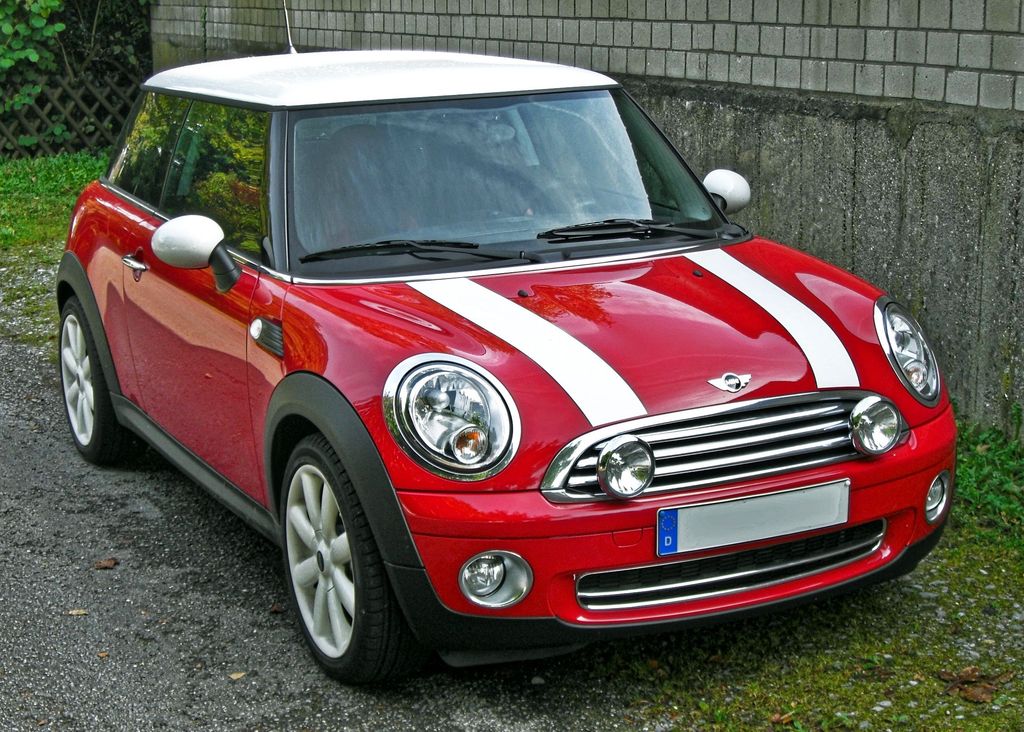
1. **Mini Cooper S**The Mini Cooper S, especially models from the mid-2000s to early 2010s, has gained a reputation for engine problems that tend to surface well before the 80,000-mile mark. While the car has a distinct style and engaging driving dynamics, its 1.6-liter turbocharged engine has a long list of mechanical concerns that have frustrated many owners. Timing chain tensioners, carbon buildup, oil consumption, and cooling system failures are just a few of the common complaints, often leading to expensive repairs or even complete engine replacements.
One of the more significant issues with the Mini Cooper S engine is timing chain failure. Instead of using a timing belt, the engine uses a chain that’s supposed to last the life of the engine. However, faulty tensioners and poor design mean the chain can stretch or fail prematurely, sometimes with catastrophic results. In many cases, the warning signs are subtle, rattling noises at startup, rough idling, or loss of power, but if ignored, the engine may suffer valve damage or worse.
Another problem area is oil consumption. Many Mini Cooper S engines are known to burn oil excessively, and there’s no low-oil warning light in some models. If owners don’t manually check their oil levels regularly, the engine can run low and suffer damage. Combine that with the potential for turbo failure and cooling system leaks, and the chances of a major failure before 80,000 miles are much higher than average.
What makes the situation worse for some owners is the cost of repair. Though the car is relatively small, the engine bay is cramped, and many components are labor-intensive to reach. This drives up the cost of fixing even simple problems. Some owners find themselves replacing timing components, gaskets, or the entire engine for costs that exceed the car’s value. While the Mini Cooper S has a fun-to-drive character, its engine problems make it a risky choice for anyone hoping for long-term reliability.
Car Model Information: 2024 Volkswagen Tiguan 2.0T SE 4MOTION
Sp: uk
Caption: 1959 Morris Mini-Minor (first one built)
Name: Mini
Aka: Austin 850,Rover Mini,Austin Cooper,Austin Mini,Austin Partner,Austin Seven,Innocenti Mini,Leyland Mini,Morris 850,Morris Mascot,Morris Mini Minor,Riley Elf,Wolseley 1000 (South Africa),Wolseley Hornet
Layout: Front-engine, front-wheel-drive layout
Manufacturer: British Motor Corporation,British Leyland,Rover Group
Production: 1959–2000 (5.38 million)
Class: City car
BodyStyle: sedan (car),convertible,Station wagon,sedan delivery,coupe utility
Engine: BMC A-series engine,Straight-four engine
Designer: Alec Issigonis,John Sheppard (car designer)
Transmission: 4-speed manual,AP automatic transmission,5-speed manual (optional extra on some later models)
Length: cvt,cvt,cvt
Width: cvt
Height: cvt
Weight: cvt
Wheelbase: cvt,cvt
Related: Mini Moke,Austin Metro,Innocenti Mini,Mini Wildgoose,Mini Marcos
Successor: Austin Metro,Mini Hatch
Assembly: Panmure, New Zealand
Categories: 1960s cars, 1970s cars, 1980s cars, 1990s cars, 2000s cars
Summary: The Mini is a very small two-door, four-seat car, produced for four decades over a single generation, with many names and variants, by the British Motor Corporation (BMC) and its successors British Leyland and the Rover Group, and finally (briefly) under BMW ownership. Minis were built as fastbacks, estates, convertibles, and various other body styles. Minus a brief 1990s hiatus, from 1959 into 2000, an estimated 5.38 million of all variations combined were built, and the Mini’s engines also powered another 2 million Mini Metros, though the Mini eventually outlasted its successor.
Initially, the Mini was marketed under the Austin and Morris names, as the Austin Seven and Morris Mini-Minor; the Austin Seven was renamed Austin Mini in 1962 and Mini became a marque in its own right in 1969. Retrospectively, the car is known as the “Classic Mini” to distinguish it from the modern MINI family of vehicles produced since 2001 by German carmaker BMW, who took ownership of the Mini name following the sale of Rover Group in 2000.
This distinctive two-door car was designed for BMC by Sir Alec Issigonis. Its space-saving transverse engine and front-wheel drive layout – allowing 80% of the area of the car’s floorpan to be used for passengers and luggage – influenced a generation of car makers. The front-wheel-drive, transverse-engine layout were used in many other “supermini” style car designs such as Honda N360 (1967), Nissan Cherry (1970), and Fiat 127 (1971). The layout was also adapted for larger subcompact designs. In 1999, the Mini was voted the second-most influential car of the 20th century, behind the Ford Model T, and ahead of the Citroën DS and Volkswagen Beetle. It is also considered an icon of 1960s British popular culture.
The Mini Mark I had three major UK updates: the Mark II, the Clubman, and the Mark III. Within these was a series of variations, including an estate car, a pick-up, a van, and the Mini Moke, a jeep-like buggy. The performance versions, the Mini Cooper and Cooper “S”, were successful as both race and rally cars, winning the Monte Carlo Rally in 1964, 1965, and 1967. The Mini was manufactured in England at the Longbridge plant in Birmingham located next to BMC’s headquarters and at the former Morris Motors plant at Cowley, as well as in Australia (Victoria Park/Zetland BMC Australia factory) and later also in Spain (Authi), Belgium, Italy (Innocenti, as the Innocenti Mini), Chile, Malta, Portugal, South Africa, Uruguay, Venezuela, and Yugoslavia (IMV). In 1980, British Leyland launched the Mini’s follow-up, the Austin Metro, however the Mini outlasted it and continued to be produced at Longbridge until October 2000.
Get more information about: Mini
Buying a high-performing used car >>>
Brand: Mini Model: Cooper S
Price: $26,995 Mileage: 7,250 mi.
Read more about: Miles of Misery: 14 Vehicles Drivers Can’t Wait to Ditch
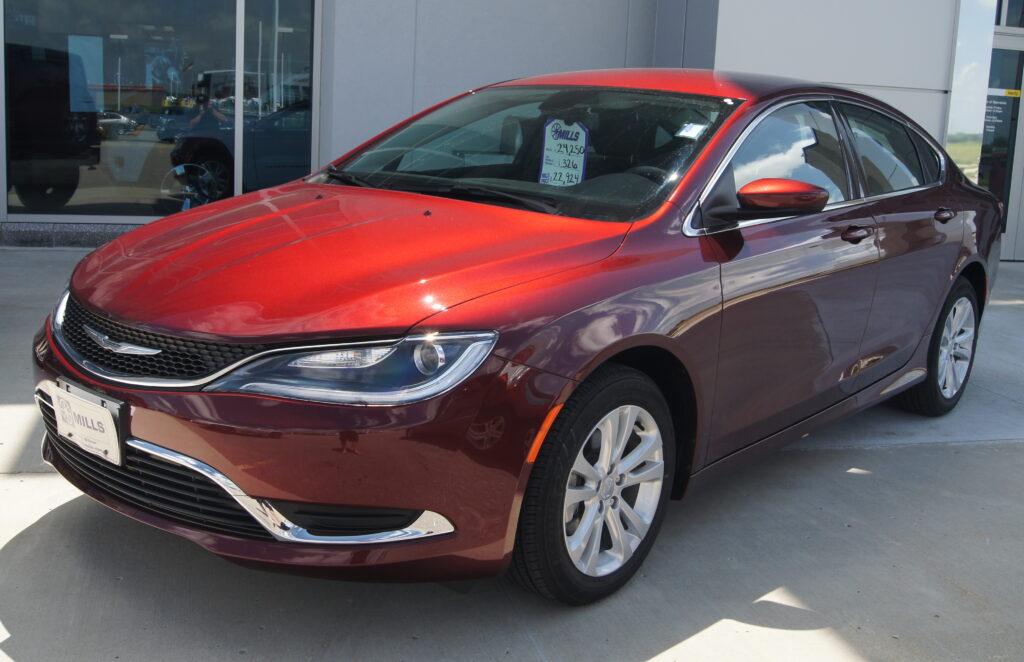
2. **Chrysler 2.7L V6**The 2.7-liter V6 engine used in several Chrysler models, including the Sebring, Intrepid, and Concorde, has become infamous for early engine failure. Though it was marketed as a modern, efficient engine, it turned out to be one of Chrysler’s most problematic powerplants. Many owners reported major engine failures before reaching 80,000 miles, often due to oil sludge buildup, timing chain problems, and poor cooling system performance. For a number of vehicles that carried this engine, the cost of repairs often exceeded the vehicle’s worth.
Oil sludge buildup is the most common culprit behind the early death of these engines. The engine’s design included narrow oil passages and a crankcase ventilation system that didn’t do a good job of keeping moisture and contaminants out of the oil. Even with regular oil changes, sludge could accumulate, restricting oil flow and starving the engine of proper lubrication. Once sludge forms, internal parts like bearings, camshafts, and timing chains begin to fail quickly.
The cooling system also had its share of weaknesses. Failures in the water pump or thermostat housing could lead to overheating, and the placement of the water pump within the engine made repairs both costly and complicated. If the pump failed and leaked coolant into the engine oil, serious damage could occur. Overheating episodes often went unnoticed until they had already caused warping or cracking of internal parts, compounding the problem.
Timing chain issues added another layer of concern. While timing chains are generally more durable than belts, the ones in this engine were prone to stretching or failure, particularly when oil sludge was present. That failure could lead to valves hitting pistons, effectively destroying the engine. Despite these known issues, Chrysler continued to use the engine in several models over multiple years, resulting in many owners being caught off guard by major engine repairs before 80,000 miles. The 2.7L V6 remains a cautionary tale for buyers of used cars.
Car Model Information: 2006 Chrysler Sebring Touring
Name: Chrysler Sebring
Class: Mid-size car
Manufacturer: Chrysler
Production: 1994–2010
Predecessor: Chrysler LeBaron
Successor: Chrysler 200
Categories: 2000s cars, 2010s cars, All articles needing additional references, All articles that may contain original research, All articles with a promotional tone
Summary: The Chrysler Sebring ( SEE-bring) is a mid-size automobile manufactured and marketed by Chrysler from 1995 to 2010 in convertible (three generations), sedan (two generations), and coupe (two generations) body styles. Both coupe generations were a Chrysler design with engineering input from Mitsubishi and were built at Mitsubishi’s Normal, Illinois facility (operated then by Diamond-Star Motors). The range was introduced in 1995, with the Coupe replacing the Chrysler LeBaron coupe. In 1996 Chrysler introduced the convertible, replacing its LeBaron counterpart.
In 2000, (then) DaimlerChrysler presented the redesigned Sebrings — Sedan, Coupe, and Convertible — at the New York Auto Show for model year 2001. The Coupe used a variant of the Mitsubishi Eclipse ST Platform, while the sedan and convertible used the Chrysler JR platform successors to the Chrysler Cirrus. The coupe was discontinued after 2005. The coupe was discontinued after 2005.
The third generation sedan was introduced for 2007, and a revised convertible the following year. New options included all-wheel drive on sedans and an available retractable metal top for the convertible. All Sebring models were replaced by the Chrysler 200 for the 2011 model year.
Get more information about: Chrysler Sebring
Buying a high-performing used car >>>
Brand: Chrysler Model: Sebring
Price: $10,970 Mileage: 43,190 mi.
Read more about: Unleashing the Legends: The 15 Most Valuable 1970s Cars Commanding Top Dollar Today
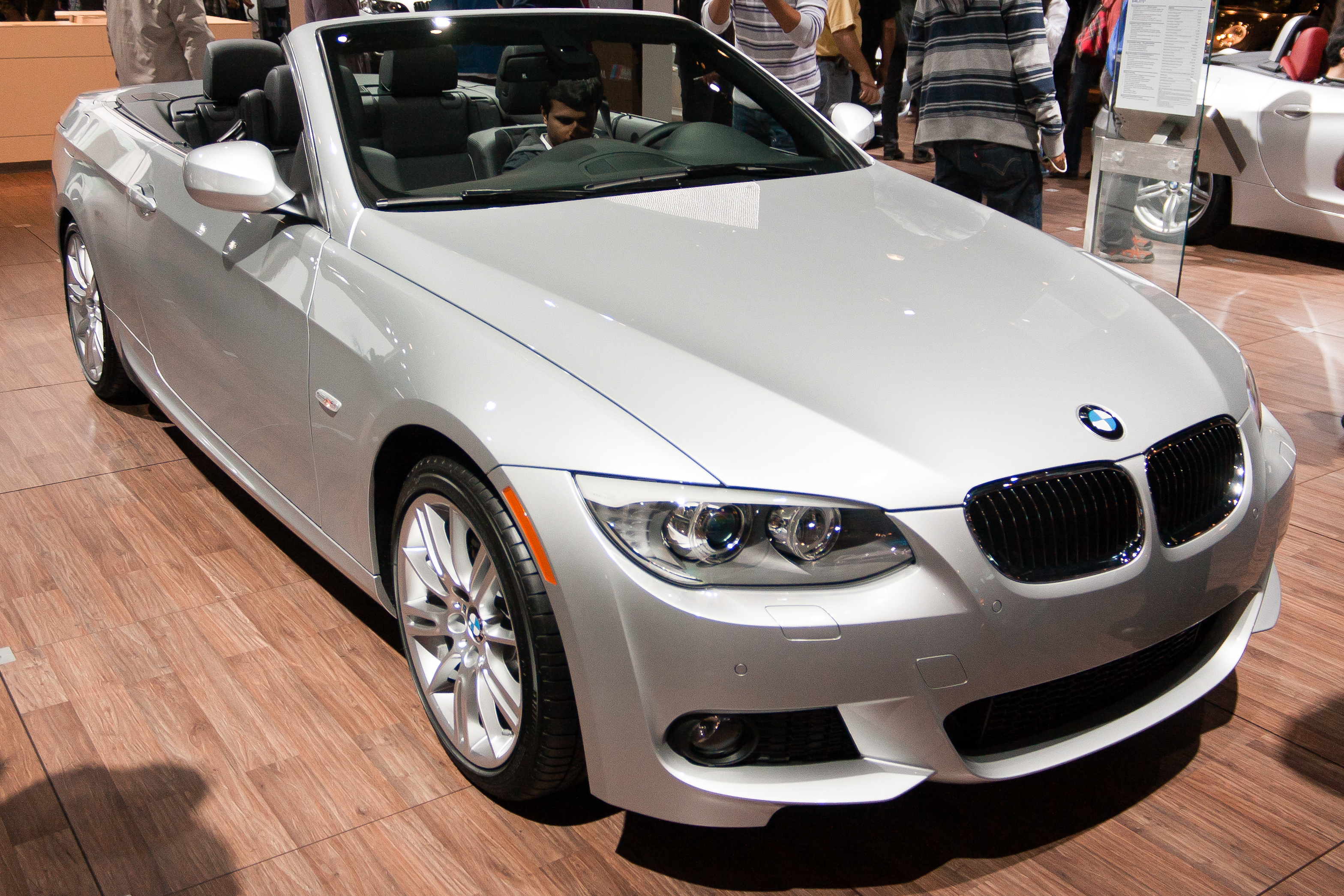
3. **BMW N54 Engine**The BMW N54 engine, used in models like the 335i and 135i from the mid to late 2000s, received praise for its performance but also developed a reputation for early mechanical issues. Despite being powerful and smooth, the twin-turbocharged inline-six was plagued with problems that often led to engine failure or expensive repairs well before reaching 80,000 miles. While not every engine failed, many required major service at low mileage, diminishing trust in its long-term reliability.
One of the most common issues with the N54 engine is high-pressure fuel pump (HPFP) failure. This component is crucial for delivering fuel to the engine under high pressure, and when it fails, the engine can stall, misfire, or enter limp mode. Many owners experienced multiple HPFP replacements within the warranty period. BMW even extended warranties on some models due to the frequency of this failure, but it remained a major concern for buyers of used vehicles.
Another significant problem with the N54 engine is carbon buildup. Because it uses direct fuel injection, fuel doesn’t clean the intake valves as it does in port-injected engines. Over time, this leads to heavy carbon deposits on the intake valves, which can reduce performance and cause rough idling or misfires. Cleaning the intake valves requires labor-intensive walnut shell blasting, a service that is costly and needs to be done regularly to avoid long-term damage.
Turbocharger failure is also a frequent issue. The N54’s twin turbos are known to wear out quickly, especially under aggressive driving or tuning. Wastegate rattle and boost loss are common signs that the turbos are failing. Replacing the turbochargers is expensive, and in some cases, engine damage from broken parts has occurred. For a car marketed as a high-performance machine, these repeated failures have disappointed many owners expecting better engineering.
Car Model Information: 2011 BMW 328 328i xDrive
Name: BMW 3 Series (E90)
Manufacturer: BMW
ModelCode: ubl
Production: December 2004 – October 2013
ModelYears: 2006–2012
Assembly: ubl
Designer: Joji Nagashima,Marc Michael Markefka (coupé and convertible)
Class: Compact executive car
Related: BMW Z4 (E89),BMW 1 Series (E87),BMW X1 (E84)
Layout: ubl
Platform: BMW L2
Engine: Petrol engine,BMW N43,BMW N52,BMW N54,BMW S65,Diesel engine,BMW M47,BMW M57
Transmission: ubl
BodyStyle: Unbulleted list
Wheelbase: Convert
Length: convert
Width: Convert
Height: Convert
Weight: Convert
Predecessor: BMW 3 Series (E46)
Successor: unbulleted list
Categories: 2010s cars, All Wikipedia articles written in British English, All articles with unsourced statements, Articles with short description, Articles with unsourced statements from January 2024
Summary: The fifth generation of the BMW 3 Series range of compact executive cars is designated under the model codes E90 (saloon), E91 (estate, marketed as ‘Touring’), E92 (coupé) and E93 (convertible). The model was introduced in December 2004, and produced by BMW until October 2013 and is often collectively referred to as the E90, E9x, or occasionally, the E92.
The E92 335i was the first 3 Series model produced with a turbocharged petrol engine. It was also the first 3 Series to include the iDrive operating system, which consists of navigation, infotainment and essential vehicle functions. The E9x saw the introduction of run-flat tyres to the 3 Series range. Models with run-flat tires are not equipped with a spare tyre.
The E90/E92/E93 M3 is the only generation of M3 to be powered by a V8 engine. Introduced in 2007, it uses the BMW S65 naturally aspirated V8 engine and was produced in saloon, coupé and convertible body styles.
Following the introduction of the F30/F31 3 Series in February 2012, the E90/E91 saloons and estates were phased out. However due to their later introduction, the E92/E93 coupés and convertibles remained in production through the 2013 model year, after which they were replaced by the F32/F33 4 Series models.
Get more information about: BMW 3 Series (E90)
Buying a high-performing used car >>>
Brand: BMW Model: 335i
Price: $8,900 Mileage: 98,600 mi.
Read more about: Buyer Warning: 9 Sports Cars That Become Reliability Nightmares Before 50,000 Miles
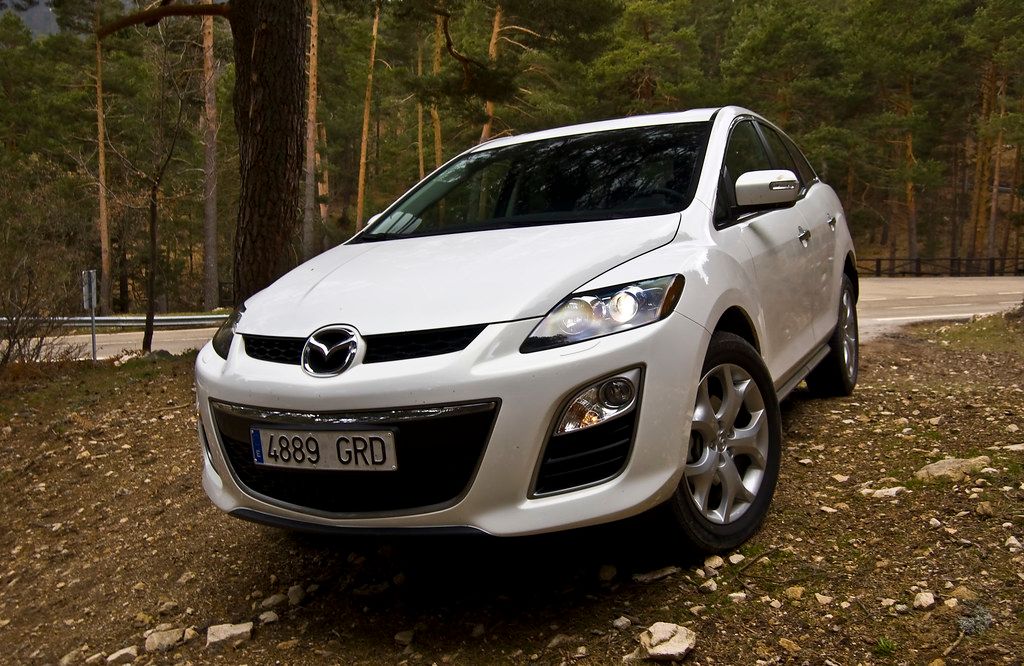
4. **Mazda CX-7**The Mazda CX-7, specifically those equipped with the 2.3-liter turbocharged engine, struggled with serious engine issues that often led to premature failure. Owners frequently reported trouble before hitting 80,000 miles, including smoking turbos, low compression, and failed timing chains. While the CX-7 had a sporty design and was fun to drive when new, its engine proved to be unreliable in the long run, leading to widespread frustration and steep repair bills.
A major issue with the CX-7’s engine is turbocharger failure. The turbo on this engine is sensitive to oil quality and proper warm-up and cool-down procedures, which many owners were unaware of. If the turbo is damaged or not lubricated properly, it can start to leak oil into the exhaust system, leading to visible smoke and poor performance. In some cases, the turbo failure damages the engine beyond simple repair, requiring either a rebuild or full replacement.
Oil consumption is another common complaint. Many CX-7s burn oil at a rate that surprises owners, especially because there’s no warning light for low oil. If the oil isn’t manually checked often, the engine can run dry, leading to internal damage. Piston ring wear and valve seal problems are known causes of this issue. Once the engine starts burning oil, the problem usually worsens quickly and becomes expensive to fix.
The timing chain is also prone to early wear, especially if oil quality is poor. Tensioner issues can lead to timing problems, and if the chain jumps or fails, the result is usually a severely damaged engine. Given the cost of fixing these issues and the number of engines that failed at relatively low mileage, the CX-7 with the 2.3L turbo engine is often recommended only to buyers who are fully aware of the risks.
Car Model Information: 2024 Mazda CX-30 2.5 S Select Sport
Name: Mazda CX-7 (ER)
Manufacturer: Mazda
Production: February 2006 – August 2012
Assembly: FAW Group,Mazda
Designer: Moray Callum,Koizumi Iwao (2003)
Class: Mid-size crossover SUV
BodyStyle: Sport utility vehicle
Layout: Front-engine, front-wheel-drive layout,Front-engine, four-wheel-drive layout
Platform: Ford Global C-car Platform
ModelCode: List of Mazda model codes#Model codes
Engine: Mazda L engine#2.3L DISI Turbo (L3-VDT),Mazda L engine#2.5 L (L5-VE),Mazda diesel engines#R2 2008 (2.2 MZR-CD)
Transmission: AWTF-80 SC,Manual transmission
Wheelbase: 2750 mm
Abbr: on
Length: convert
Width: 1872 mm
Height: 1646 mm
Weight: 1782 kg
Predecessor: Mazda Tribute
Successor: Mazda CX-5
Categories: 2010s cars, All-wheel-drive vehicles, Articles with short description, Cars discontinued in 2012, Cars introduced in 2006
Summary: The Mazda CX-7 is a mid-size crossover SUV from Mazda, and is the production version of the MX-Crossport concept car. It was shown publicly for the first time at the 2006 LA Auto Show in January. Production officially began on February 20, 2006 in Mazda’s Ujina #2 factory in Hiroshima, and went on sale in April 2006 as a 2007 model. The CX-7 was Mazda’s first mid-size SUV since the Navajo was discontinued in 1994, although the CX-7 is considered more of a ‘Soft Roader’.
The mid-size CX-7 was positioned below the larger three-row Mazda CX-9; the vehicles did not share platforms. Instead, it used the Ford C1 platform that underpinned the Ford Focus and Mazda3. The CX-7 was discontinued in August 2012 in favor of the new Mazda CX-5; as the compact CX-5 has similar interior space to the mid-size CX-7.
Get more information about: Mazda CX-7
Buying a high-performing used car >>>
Brand: Mazda Model: CX-7
Price: $23,449 Mileage: 20,298 mi.
Read more about: Avoid These 16 Cars: They Become Money Pits After 100,000 Miles

5. **Audi A4 2.0T**The Audi A4 equipped with the 2.0-liter turbocharged four-cylinder engine, particularly from the early 2000s through mid-2010s, has earned a reputation for engine troubles that often occur before 80,000 miles. This engine, while offering strong performance and good fuel economy, is frequently plagued by excessive oil consumption, timing chain tensioner issues, and turbocharger problems. These recurring issues often result in high repair costs and, in many cases, complete engine failure.
One of the biggest complaints is excessive oil consumption. Some engines consume a quart of oil every 1,000 miles or less, which can lead to serious damage if not constantly monitored. Audi acknowledged the issue in some cases and offered limited coverage or settlements, but many owners were left on their own. Low oil levels contribute to premature wear, overheating, and failure of key components like pistons, rings, and bearings, making recovery both difficult and financially burdensome once this internal wear commences.
The timing chain tensioner is another known weakness. If the tensioner fails, the chain can jump, resulting in the pistons striking the valves. This often totals the engine, requiring a full replacement. Though Audi issued technical service bulletins about the problem, it wasn’t a common recall, and many owners only became aware after costly damage occurred. Regular inspection and early replacement of the timing chain components can help avoid this fate, but the problem has tarnished the engine’s reputation.
Turbocharger reliability also presents a considerable concern on some A4 models, which, if neglected or improperly cooled, can lead to costly failures. Debris from a failing turbo can further damage engine internals, accelerating its demise. Despite these issues, many Audi A4 2.0T engines do run past 100,000 miles with proper care, but the number of early failures and repair bills that come before 80,000 miles make this engine a risky choice. Buyers should be prepared for vigilant maintenance and the very real possibility of expensive repairs, as the 2.0T engine can turn from a pleasure to a headache in a surprisingly short time.
Car Model Information: 2015 Audi A4 2.0T Premium
Name: Audi A4
Caption: Audi A4 (B9.5; facelift)
Manufacturer: Audi AG
Production: 1994–2025
Assembly: Germany,India,China,Indonesia,Ukraine
Class: Compact executive car
BodyStyle: Sedan (car)
Platform: Volkswagen Group B platform
Layout: Front-engine, front-wheel drive layout
Sp: uk
Predecessor: Audi 80
Successor: Audi A5#Third generation (2024)
Categories: 2000s cars, 2010s cars, 2020s cars, All-wheel-drive vehicles, All articles lacking reliable references
Summary: The Audi A4 is a line of luxury compact executive cars produced from 1994 to 2025 by the German car manufacturer Audi, a subsidiary of the Volkswagen Group. The A4 has been built in five generations and is based on the Volkswagen Group B platform. The first generation A4 succeeded the Audi 80. The automaker’s internal numbering treats the A4 as a continuation of the Audi 80 lineage, with the initial A4 designated as the B5-series, followed by the B6, B7, B8, and the B9.
The B8 and B9 versions of the A4 are built on the Volkswagen Group MLB platform shared with several models and brands across the Volkswagen Group. The Audi A4 automobile layout consists of a front-engine design, with transaxle-type transmissions mounted at the rear of the engine. The cars are front-wheel drive, or on some models, “quattro” all-wheel drive. The A4 is available as a sedan and station wagon. Historically, the second (B6) and third generations (B7) of the A4 also included a convertible version. For the B8 and B9 versions, the convertible, along with a new coupé and 5-door liftback variant, was spun-off by Audi into a new nameplate called the Audi A5.
The B9 generation A4 and A5 will be replaced by B10 version of A5, as part of Audi’s new naming convention.
Get more information about: Audi A4
Buying a high-performing used car >>>
Brand: Audi Model: A4
Price: $11,379 Mileage: 98,606 mi.
Read more about: Navigating the SUV Market: 14 Models U.S. Consumers Should Approach with Caution in 2024-2025
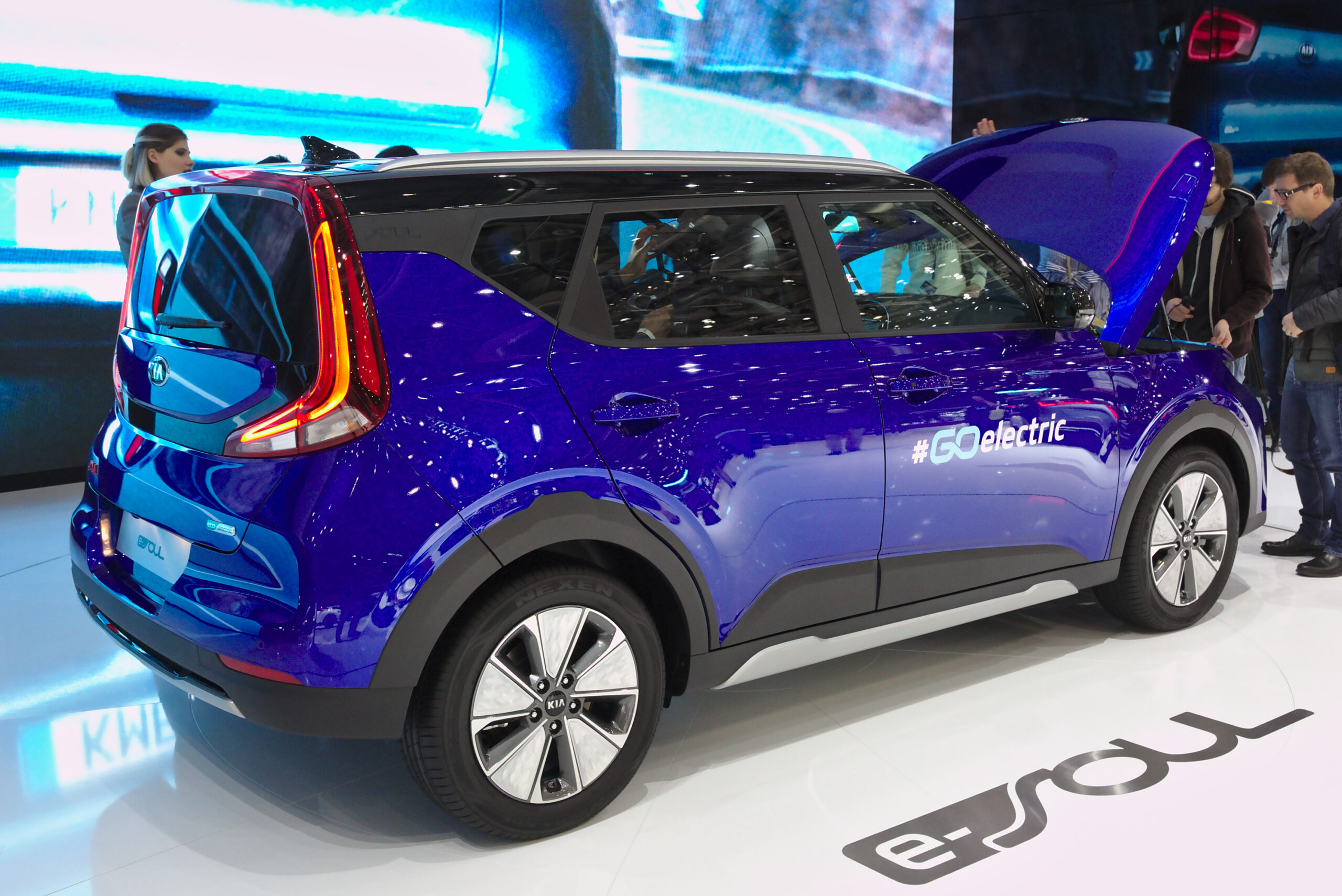
6. **Kia Soul**The Kia Soul, with its distinctive, boxy design and surprisingly spacious interior, appeals to a diverse crowd. While it may seem like a practical choice, it has a reputation for developing engine problems and transmission issues long before it hits 100,000 miles. With reports of premature wear and a few quirks in the electrical system, owners often find themselves making unexpected visits to the mechanic.
The vibrant exterior may catch your eye, but beneath the surface, the Kia Soul can present significant challenges. Its engine and transmission issues typically begin to surface well before the 100,000-mile mark, a critical point where many cars ideally should still be performing reliably. These problems often necessitate costly and unanticipated repairs, diminishing the perceived value and reliability of the vehicle over time.
Ultimately, while the Kia Soul offers a unique style and functionality, its documented propensity for early engine and transmission issues, alongside electrical system quirks, makes it a less-than-ideal choice for those seeking long-term dependability. For buyers prioritizing lasting reliability, the potential hassles and expenses associated with the Soul’s premature mechanical failures often outweigh its initial appeal, making it a cautionary consideration in the compact car segment.
Car Model Information: 2023 Kia Soul LX
Name: Kia Soul
Caption: 2023 Kia Soul GT Line
Manufacturer: Kia
Production: 2008–2025
Class: Subcompact crossover SUV
BodyStyle: hatchback
Layout: Front-engine, front-wheel-drive
ModelYears: 2010–2025
Categories: 2010s cars, All articles with dead external links, All articles with unsourced statements, Articles containing Korean-language text, Articles with dead external links from December 2017
Summary: The Kia Soul is a subcompact crossover SUV manufactured and marketed by Kia since 2008. Often described and marketed as a crossover since its introduction, the Soul is a hatchback with a box proportion and tall roof, which are designed to maximize its interior space. Despite its SUV-like styling, the Soul was never available with all-wheel drive, instead it is exclusively a front-wheel drive vehicle. The Soul first appeared in 2006 in the form of a concept model displayed at the North American International Auto Show in Detroit. The production model made its debut at the Paris Motor Show in 2008. During its introduction, Kia stated that the Soul is aimed at the North American market, and targeted towards buyers in the 18 to 35-year old range. The second-generation model was introduced in 2013 for the 2014 model year, which featured a larger exterior and interior dimensions along with a reworked chassis, while keeping its boxy styling. The Soul is currently in its third generation, which was introduced in 2018 for the 2019 model year. Since 2014, Kia has also marketed a battery electric variant as the Soul EV. The name “Soul” comes from the homophone of Seoul, the city that hosts Kia’s headquarters.
Get more information about: Kia Soul
Buying a high-performing used car >>>
Brand: Kia Model: Soul
Price: $19,000 Mileage: 55,083 mi.
Read more about: Smile! You’re On Camera! We Found the 12 Actors Whose Grins Are IMPOSSIBLE Not to Recognize!
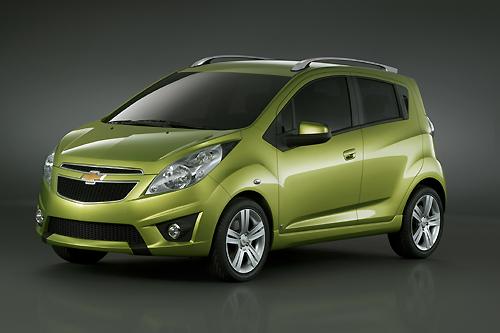
7. **Chevrolet Spark** The Chevrolet Spark, often celebrated for its highly accessible price point and nimble handling within congested urban environments, frequently positions itself as an ideal entry-level or secondary vehicle. However, a deeper dive into long-term ownership data reveals a consistent pattern of mechanical vulnerabilities, particularly concerning its engine and transmission components, which often manifest prematurely. These issues tend to emerge significantly before the 80,000-mile mark, challenging the vehicle’s practicality for those seeking lasting reliability beyond initial ownership.
The 1.4-liter four-cylinder engine, while providing adequate power for city driving, has been a frequent subject of consumer complaints regarding its durability. Owners have reported a range of engine problems, from unusual noises and excessive oil consumption to more severe internal component failures, leading to diminished power output or complete breakdowns. Such issues are particularly concerning because they often necessitate costly repairs that can quickly erode the Spark’s perceived initial affordability, turning a budget-friendly purchase into a substantial financial burden for owners.
Compounding the engine concerns are recurring problems with the Spark’s transmission, whether it’s the continuously variable transmission (CVT) or manual gearbox. CVT units, in particular, have shown a propensity for early failure, exhibiting symptoms such as erratic shifting, shuddering, or a complete loss of drive. These transmission issues, much like the engine problems, represent major mechanical failures that require expensive and often time-consuming interventions, making the prospect of long-term ownership a significant gamble for many.
Ultimately, while the Chevrolet Spark effectively serves its purpose as a compact city car, its documented struggles with engine and transmission reliability well before reaching a significant mileage milestone present a clear cautionary tale. For consumers prioritizing long-term dependability and minimal unexpected maintenance costs, the Spark’s tendency for premature mechanical issues, poor build quality, and subpar performance in the long run makes it a less-than-ideal choice. Prospective buyers should be prepared for potential repair costs that could quickly surpass the vehicle’s depreciated value, emphasizing the importance of a thorough pre-purchase inspection.
Car Model Information: 2025 Chevrolet Trax LT
Name: Chevrolet Spark
Manufacturer: unbulleted list
Production: 1998–2022
Class: City car
BodyStyle: hatchback
Layout: Front-engine, front-wheel-drive layout
Predecessor: Daewoo Tico
Categories: 2000s cars, 2010s cars, 2020s cars, All articles containing potentially dated statements, All articles with unsourced statements
Summary: The Chevrolet Spark is a city car manufactured by General Motors’s subsidiary GM Korea from 1998 to 2022. The vehicle was developed by Daewoo and introduced in 1998 as the Daewoo Matiz. In 2002, General Motors purchased Daewoo Motors, which was marketing the vehicle with several GM marques and nameplates. The third generation was marketed globally, prominently under the Chevrolet brand in North America as the Chevrolet Spark and in Australia and New Zealand as the Holden Barina Spark. The fourth generation was launched in 2015, known as the Holden Spark in Australia and New Zealand. It also serves as the basis for the Opel Karl in Europe, Vauxhall Viva in the UK, and VinFast Fadil in Vietnam, the latter being manufactured under license. A limited-production all-electric version, the Chevrolet Spark EV, was released in the U.S. in selected markets in California and Oregon in June 2013. The Spark EV was the first all-electric passenger car marketed by General Motors since the EV1 was discontinued in 1999, and also the first offered for retail sale by GM (the EV1 was available only on lease). In the South Korean market, the Spark complies with South Korean “light car” regulations, which regulate overall vehicle dimensions and engine capacity with tax and parking fee benefits. Production of the Spark at the Changwon, South Korea assembly plant ended in 2022. The plant would instead produce the second-generation Trax.
Get more information about: Chevrolet Spark
Buying a high-performing used car >>>
Brand: Chevrolet Model: Spark
Price: $21,988 Mileage: 6,775 mi.
Read more about: Navigating the SUV Market: 14 Models U.S. Consumers Should Approach with Caution in 2024-2025
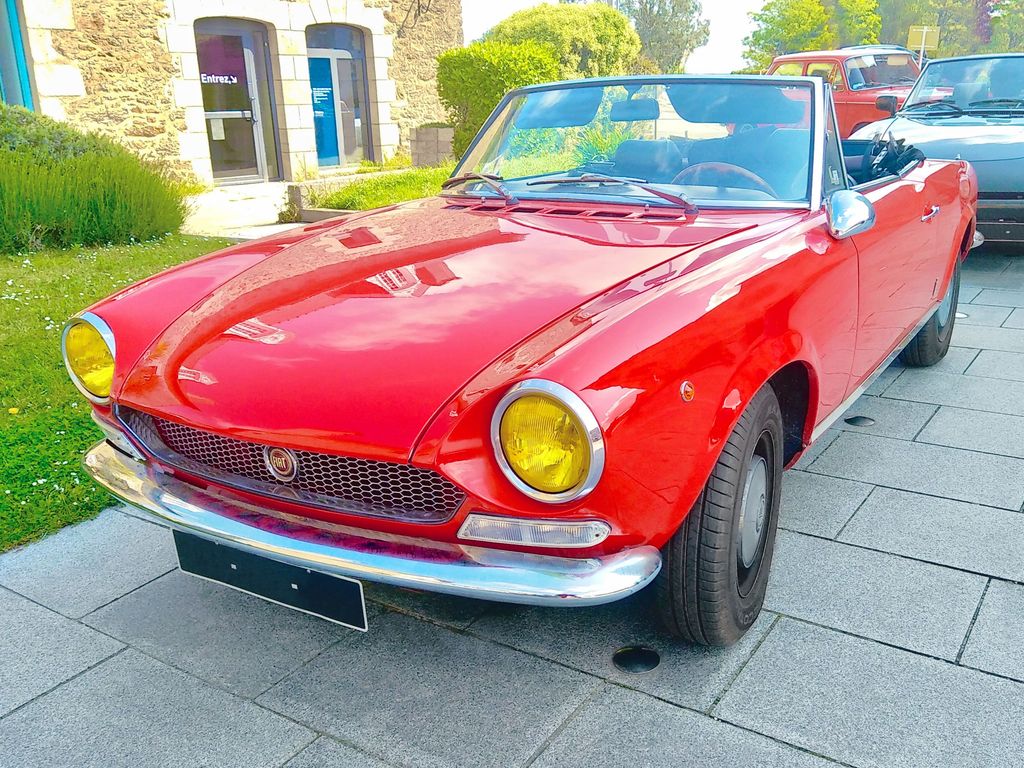
8. **Fiat 124 Spider** The Fiat 124 Spider, a stylish two-seater roadster, offers a distinct blend of Italian design flair and a lively driving experience, undoubtedly appealing to enthusiasts yearning for a convertible that stands apart. This vehicle, however, often comes with a caveat concerning its long-term mechanical robustness. Reliability concerns, particularly affecting its core systems, have been widely reported, with issues frequently arising well before the 80,000-mile point, thereby impacting its suitability as a dependable, everyday driver over extended periods.
One of the more prevalent issues reported by 124 Spider owners involves various electrical problems. These can manifest in a multitude of ways, from unexpected warning lights appearing on the dashboard and malfunctions with the infotainment system to issues with power accessories like windows and mirrors. Diagnosing and resolving these electrical gremlins often proves challenging and expensive, requiring specialized tools and expertise. Such intermittent or persistent electrical faults can significantly detract from the driving pleasure and the vehicle’s overall perceived quality, eroding owner confidence.
Furthermore, the 1.4-liter turbocharged engine, while spirited, is not without its vulnerabilities. Owners have frequently cited issues such as turbocharger failures, which are critical for the car’s performance. When a turbo fails, it can lead to a significant loss of power, abnormal noises, or even visible smoke from the exhaust, requiring costly replacement. Additionally, a tendency for engine oil leaks has been noted, which, if not promptly addressed, can lead to more severe internal engine damage due to insufficient lubrication or contamination, directly impacting the engine’s lifespan.
Given these recurring mechanical and electrical concerns, the Fiat 124 Spider, while delivering undeniable thrills and nostalgic charm in the short term, requires a vigilant approach to ownership. For buyers seeking a low-maintenance, reliable vehicle for extended use, the potential for early and costly repairs, especially involving the turbocharger and electrical system, makes it a less-than-ideal investment. Prospective owners should factor in potential significant maintenance costs, which can quickly accumulate before the vehicle even approaches the 80,000-mile mark, urging caution for those expecting carefree motoring.
Car Model Information: 2023 Ford Mustang EcoBoost Premium
Name: Fiat 124 Sport Spider
Caption: Fiat 124 Sport Spider (CS)
Aka: Fiat Spider 2000 , Pininfarina Spider (1982–1985)
Manufacturer: Fiat Automobiles
Production: 1966–1985
Assembly: Turin
Designer: Pininfarina,Tom Tjaarda,Franco Martinengo (design director),Battista Pininfarina
Class: Sports car
BodyStyle: Cabriolet (automobile)
Layout: Front-engine, rear-wheel-drive layout
Related: Fiat 124
Engine: {{convert,1438,cc,L,1,abbr=on,Inline-four engine
Abbr: on
Transmission: Manual transmission,5-speed manual,Automatic transmission
Wheelbase: 89.75 in
Length: 156.25 in
Width: 63.5 in
Height: 49.25 in
Weight: 2028 lb
Predecessor: Fiat Pininfarina Cabriolet
Successor: Fiat Barchetta,Fiat 124 Spider (2016)
Sp: uk
Categories: 1960s cars, 1970s cars, 1980s cars, All articles with dead external links, Articles with dead external links from August 2025
Summary: The Fiat 124 Sport Spider is a convertible sports car marketed by Fiat for model years 1966–1982 and by Pininfarina for 1982–1985 model years. Designed by and manufactured at the Italian carrozzeria Pininfarina factory, the monocoque, front-engined, rear-drive Sport Spider debuted at the November 1966 Turin Auto Show with styling by Tom Tjaarda.
Fiat later marketed the car as the Spider 2000 (1979–1982). After being retired by Fiat, Pininfarina continued the production of the model under its own brand as Pininfarina Spider Azzurra for the North American market and Pininfarina Spidereuropa for the European market for three more years, from August 1982 until 1985.
In 2015, a successor of the Fiat 124 Spider was presented at the Los Angeles Auto Show.
Get more information about: Fiat 124 Sport Spider
Buying a high-performing used car >>>
Brand: Fiat Model: 124 Spider
Price: $23,897 Mileage: 49,457 mi.
Read more about: Gone But Not Forgotten: 14 Beloved Cars That Vanished Unexpectedly from Production
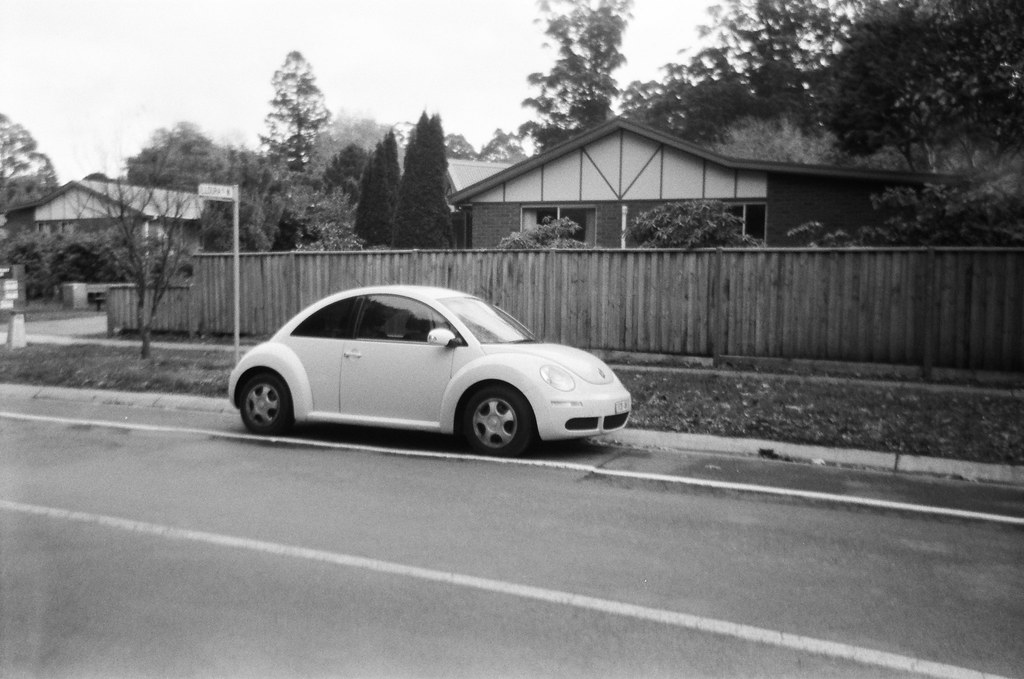
9. **Volkswagen Beetle** The Volkswagen Beetle holds an iconic place in automotive history, beloved for its distinctive silhouette and a unique personality that sets it apart from more conventional compacts. While it offers a charm and driving experience deeply rooted in nostalgia, data and owner feedback suggest that the Beetle, particularly later generations, frequently encounters mechanical issues that undermine its long-term reliability. These problems often appear well before the 80,000-mile mark, necessitating significant and often costly repairs that temper its appeal as a durable daily driver.
Among the more commonly reported issues are widespread electrical system faults. These can range from relatively minor inconveniences, such as sensor failures or issues with warning indicators, to more critical problems affecting the engine control unit (ECU) or essential wiring harnesses. Such electrical malfunctions can lead to intermittent operational failures, reduced performance, or even prevent the vehicle from starting. The complexity of these systems often translates into expensive diagnostic fees and intricate repair processes, adding substantially to the cost of ownership.
Beyond electrical woes, the Beetle has also faced recurring issues related to its transmission, particularly with automatic and DSG (Direct Shift Gearbox) units. Owners have reported symptoms such as harsh shifting, hesitation, or complete transmission failure, often before reaching typically expected service intervals. These transmission problems are notoriously expensive to fix, sometimes requiring complete unit replacements, which can represent a significant portion of the vehicle’s value, especially as it approaches the 80,000-mile milestone.
Ultimately, while the Volkswagen Beetle continues to captivate with its endearing design and spirited character, its documented propensity for premature mechanical issues, including significant electrical and transmission problems, casts a shadow over its long-term reliability. For consumers prioritizing a dependable and low-cost ownership experience that extends well beyond the warranty period, the Beetle’s charm may not outweigh the financial and logistical burden of frequent and expensive repairs that tend to materialize before it reaches the 80,000-mile mark.
Car Model Information: 1964 Volkswagen Beetle (Pre-1980) Base
Sp: uk
Name: Volkswagen Type 1,”Beetle”
Caption: 1965–1966 Volkswagen Käfer
Manufacturer: Volkswagen
Alt: A front-three quarters view of a pale-yellow Volkswagen Käfer. It features 165/80R15 tires, which shod 15×4. 5″ silver, circular wheels. The Käfer features a beetle-like body, and its window is open. The picture is taken with much greenery in the background, and the photo was edited to give it a more warmer tone.
Aka: List of names for the Volkswagen Type 1
Assembly: #Markets and assembly
Designer: Ferdinand Porsche
Class: Small family car
BodyStyle: Sedan (automobile),convertible
Production: 1938–2003,21,529,464 produced
Successor: Volkswagen Golf Mk1,Volkswagen Gol#First generation (Typ30, 1980),Volkswagen New Beetle
Layout: Rear-engine, rear-wheel-drive layout
Engine: Petrol,Volkswagen air-cooled engine,1192 cc H4,1285 cc H4,1493 cc H4,1584 cc H4
Transmission: manual transmission,Saxomat,Autostick
Wheelbase: convert
Length: convert
Width: convert
Height: 1500 mm
Abbr: on
Weight: convert
Categories: 1940s cars, 1950s cars, 1960s cars, 1970s cars, 1980s cars
Summary: The Volkswagen Beetle, officially the Volkswagen Type 1, is a small family car produced by the German company Volkswagen from 1938 to 2003. A global cultural icon known for its bug-like design, the Beetle is widely regarded as one of the most influential cars of the 20th century. Its production period of 65 years is the longest for any single generation of automobile, and its total production of 21.5 million units makes it the most produced car of a single platform in history and the second-highest of all nameplates manufactured in the 20th century.
The Beetle was conceived in the early 1930s. The leader of Nazi Germany, Adolf Hitler, decided there was a need for a people’s car—an inexpensive, simple, mass-produced car—to serve Germany’s new road network, the Reichsautobahn. The German engineer Ferdinand Porsche and his design team began developing and designing the car in the early 1930s, but the fundamental design concept can be attributed to Béla Barényi in 1925, predating Porsche’s claims by almost ten years. The result was the Volkswagen Type 1 and the introduction of the Volkswagen brand. Volkswagen initially slated production for the late 1930s, but the outbreak of war in 1939 meant that production was delayed until the war had ended. The car was originally called the Volkswagen Type 1 and marketed simply as the Volkswagen. It was not until 1968 that it was officially named the “Beetle”.
Volkswagen implemented designations for the Beetle in the 1960s, including 1200, 1300, 1500, 1600, 1302, and 1303. Volkswagen introduced a series of large luxury models throughout the 1960s and 1970s—comprising the Type 3, Type 4 and K70—to supplement the Beetle, but none of these models achieved the level of success that it did. In 1972, it became the best-selling car of all time, a position it retained for nearly three decades. Rapidly changing consumer preferences toward front-wheel drive compact hatchbacks in Europe prompted Volkswagen’s gradual shift away from rear-wheel drive, starting with the Golf in 1974. In the late 1970s and ’80s, Japanese automakers dominated some markets around the world, which contributed to the Beetle’s declining popularity.
The Beetle remains one of the best-selling cars of all time and is the first to sell over 20 million units. Over its lifespan, its design remained consistent, yet Volkswagen implemented over 78,000 incremental updates. These modifications were often subtle, involving minor alterations to its exterior, interior, colours, and lighting. Some more noteworthy changes included the introduction of new engines, models and systems, such as improved technology or comfort. The Beetle maintains a substantial cultural influence and is regarded as one of the most iconic vehicles in automotive history; its success largely influenced the way automobiles are designed and marketed, and propelled Volkswagen’s introduction of a Golf-based series of vehicles.
Get more information about: Volkswagen Beetle
Buying a high-performing used car >>>
Brand: Volkswagen Model: Beetle
Price: $34,997 Mileage: 669 mi.
Read more about: Buyer Warning: 9 Sports Cars That Become Reliability Nightmares Before 50,000 Miles

10. **Mazda 3** The Mazda 3 has consistently been lauded for its engaging driving dynamics, refined interior, and a sleek design that often belies its compact car segment. Its “Zoom-Zoom” philosophy promises a spirited connection between driver and road. However, despite these commendable attributes, a thorough review of long-term reliability reports indicates that certain generations of the Mazda 3 can present notable engine and electrical concerns that may emerge well before the 80,000-mile mark, challenging its reputation for overall dependability.
A significant and frequently reported issue with specific Mazda 3 engines involves excessive oil consumption. This problem, which can escalate over time, requires owners to meticulously monitor and frequently top up their engine oil levels to prevent potentially catastrophic internal damage. If neglected, low oil levels accelerate wear on critical components like piston rings and valve seals, leading to reduced engine performance, increased emissions, and ultimately, costly repairs or even premature engine failure. This demands a proactive maintenance approach, which might catch some owners off guard.
Furthermore, various electrical malfunctions have been a point of concern for some Mazda 3 owners. These issues can range from problems with the air conditioning system, power steering, or dashboard warning lights, to more complex sensor-related failures that affect engine management or other critical systems. Such electrical problems, even if seemingly minor, can lead to inconvenient vehicle downtime and often require detailed diagnostic work, contributing to unexpected maintenance expenses and a diminished sense of reliability for the vehicle.
While the Mazda 3 undoubtedly offers a fun and stylish driving experience, its propensity for significant issues such as excessive oil consumption and electrical faults before reaching the 80,000-mile mark should be a key consideration for prospective buyers. For those seeking a truly worry-free long-term compact car, the potential for these costly and inconvenient problems means that the Mazda 3 demands a higher level of vigilance and a more generous budget for potential maintenance and repairs than its initial appeal might suggest.
Car Model Information: 2024 Mazda CX-30 2.5 Turbo Premium Plus Package
Name: Mazda3
Manufacturer: Mazda
Aka: Mazda Axela (Japan and China, 2003–2019)
Production: 2003–present
Class: Compact car
BodyStyle: Sedan (automobile),hatchback
Layout: Front-engine, front-wheel-drive layout,Front-engine, four-wheel-drive layout
Predecessor: Mazda Familia
Categories: 2010s cars, 2020s cars, All Wikipedia articles written in British English, All articles needing rewrite, All articles with dead external links
Summary: The Mazda3 (known as the Mazda Axela in China and Japan (first three generations until 2019), a combination of “accelerate” and “excellent”) is a compact car manufactured by Mazda, available as a 5-door hatchback and 4-door sedan across all generations. It was first introduced in 2003 as a 2004 model, replacing the Familia/323/Protegé in the C-segment. The second-generation Mazda3 for the 2009 model year was unveiled in late 2008, with the sedan premiering at the Los Angeles Auto Show and the hatchback at the Bologna Motor Show. For the 2012 model year, Mazda began offering the Mazda3 with their newly developed Skyactiv technology, including a more rigid body, a new direct-injection engine, and a new 6-speed transmission. The third generation was introduced in mid-2013 as a 2014 model year. The third-generation model is the first Mazda3 to adopt the “Kodo” design language and a more complete Skyactiv range of technologies and the first to be made by Mazda independently. The fourth-generation Mazda3 for the 2019 model year was unveiled in November 2018 at the Los Angeles Auto Show. For the 2019 model, the all-new Mazda3 is equipped with the updated Skyactiv technologies, including a spark-controlled compression ignition engine marketed as the Skyactiv-X. A performance-oriented version of the Mazda3 was marketed until 2013 as the Mazdaspeed3 in North America, Mazdaspeed Axela in Japan, and the Mazda3 MPS in Europe and Australia. The Mazda3 became one of Mazda’s fastest-selling vehicles, with cumulative sales in January 2019 of over 6 million units.
Get more information about: Mazda3
Buying a high-performing used car >>>
Brand: Mazda Model: 3
Price: $26,950 Mileage: 13,329 mi.
Read more about: Navigating the SUV Market: 14 Models U.S. Consumers Should Approach with Caution in 2024-2025
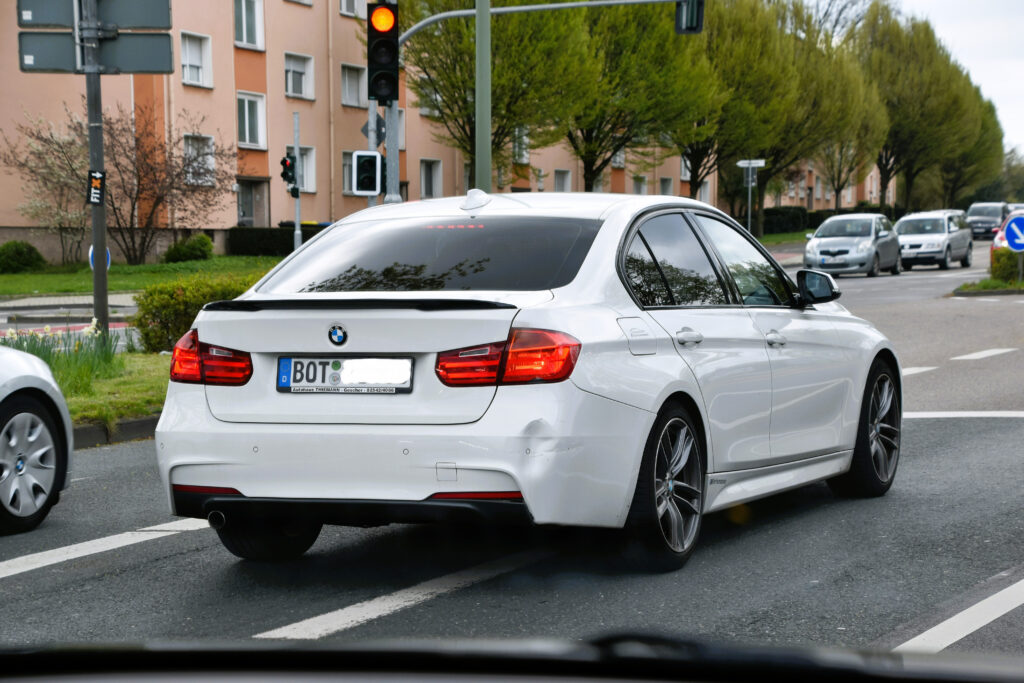
11. **BMW 3 Series** The BMW 3 Series has long been considered the quintessential luxury sports sedan, celebrated for its exquisite balance of performance, sophisticated technology, and premium comfort. Its reputation for engineering excellence is well-deserved in terms of driving dynamics. However, the intricate and high-performance nature of its components often translates into a higher likelihood of significant mechanical and electrical issues emerging well before the 80,000-mile mark, making it a potentially expensive proposition for long-term ownership.
One of the most frequently cited problems for turbocharged 3 Series models, such as the 330i, involves premature turbocharger failures. These critical components operate under extreme stress and temperature, and their intricate design makes them susceptible to wear and breakdown, often manifesting as reduced engine power, unusual noises, or warning lights. Replacing a turbocharger is a substantial repair, typically costing thousands of dollars, and can be further complicated if a failing unit sheds metallic debris into the engine, leading to even more extensive damage.
Cooling system reliability also presents a common vulnerability across various 3 Series generations. Components like the water pump, thermostat, and radiator hoses are known to fail prematurely, particularly as the vehicle approaches the 80,000-mile threshold. An inadequate cooling system can quickly lead to engine overheating, which can result in severe and often irreversible damage to the cylinder head, gaskets, and other vital engine parts. Proactive replacement of these components is often recommended but adds significantly to the maintenance burden.
Moreover, the advanced electronic systems that contribute to the 3 Series’ luxury and performance are also a source of potential problems. Issues with various sensors, control modules, and the complex iDrive infotainment system can lead to frustrating malfunctions and costly diagnostic and repair bills. Given the high cost of specialized BMW parts and labor, the combined potential for turbocharger, cooling system, and electronic failures means that while the 3 Series delivers an unparalleled driving experience, buyers should budget generously for its upkeep, as major expenses are highly probable before the 80,000-mile mark.
Car Model Information: 2018 RAM 2500 Power Wagon
Name: BMW 3 Series
Manufacturer: BMW
Production: 1975–present
Class: Compact executive car
Predecessor: BMW 02 Series
Categories: 1970s cars, 1980s cars, 1990s cars, 2000s cars, 2010s cars
Summary: The BMW 3 series is a line of compact executive cars manufactured by the German automaker BMW since May 1975. It is the successor to the 02 series and has been produced in seven generations.
The first generation of the 3 Series was only available as a 2-door saloon; the model range expanded to include a 4-door saloon, 2-door convertible, 2-door coupé, 5-door estate, 5-door liftback (“Gran Turismo”; discontinued in 2019) and 3-door hatchback body styles. Since 2013, the coupé and convertible models have been marketed as the 4 Series; these styles no longer being included in the 3 Series.
The 3 Series is BMW’s best-selling model line, accounting for around 30% of the BMW brand’s annual total car sales, and has won numerous awards throughout its history. The M version of the 3 series, M3, debuted with the E30 M3 in 1986.
Get more information about: BMW 3 Series
Buying a high-performing used car >>>
Brand: BMW Model: 3 Series
Price: $42,283 Mileage: 40,455 mi.
Read more about: Miles of Misery: 14 Vehicles Drivers Can’t Wait to Ditch
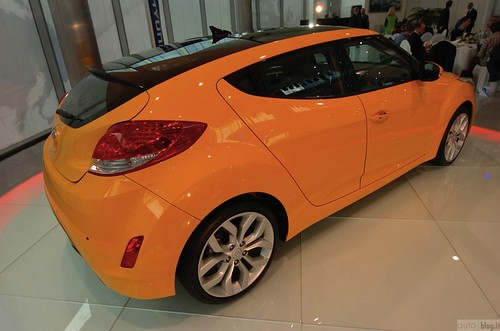
12. **Hyundai Veloster** The Hyundai Veloster distinguishes itself in the compact car segment with its bold, unconventional three-door design and an overall sporty demeanor aimed at a younger, style-conscious demographic. While it certainly offers a unique aesthetic and an engaging driving feel, a closer look at its long-term reliability reveals a pattern of significant mechanical problems, particularly affecting its engine and transmission, which often surface disappointingly early, well before the 80,000-mile mark.
Core to these concerns are recurring issues with the Veloster’s powertrain. Owners have frequently reported problems ranging from excessive oil consumption and persistent engine misfires to more severe internal engine component failures, which can drastically reduce performance and necessitate costly overhauls. These engine troubles, especially when they occur prematurely, not only impact the vehicle’s driving characteristics but also raise serious questions about its overall build quality and durability for sustained use beyond initial warranty periods.
Furthermore, the Veloster’s transmissions, both manual and automatic (including dual-clutch variants), have been a source of common complaints. Manual models can experience premature clutch wear or issues with the shifter mechanism, while dual-clutch transmissions have been cited for exhibiting jerky operation, hesitation, or even complete failure. Such transmission problems are particularly expensive to diagnose and repair, significantly eroding the vehicle’s value and making it a less attractive option for those seeking dependable, hassle-free transport.
In conclusion, while the Hyundai Veloster presents an undeniably attractive package with its distinctive styling and sporty performance, its documented propensity for early engine and transmission issues, alongside other reliability concerns, makes it a high-risk choice for long-term ownership. For consumers who prioritize longevity and minimal unexpected maintenance costs, the Veloster’s frequent need for substantial repairs well before reaching the 80,000-mile mark serves as a strong cautionary indicator, suggesting that its style may ultimately come at a significant and recurring financial cost.
Car Model Information: 2012 Hyundai Veloster Base
Name: Hyundai Veloster
Manufacturer: Hyundai Motor Company
Production: 2011–2022
Class: Sport compact car
Layout: Front-engine, front-wheel-drive layout
BodyStyle: hatchback
Predecessor: Hyundai Tiburon
ModelYears: 2012–2022
Assembly: Ulsan
Categories: All Wikipedia articles in need of updating, All articles with unsourced statements, Articles containing Korean-language text, Articles with short description, Articles with unsourced statements from May 2018
Summary: The Hyundai Veloster is a compact car first produced in 2011 by Hyundai, with sales beginning in South Korea on March 10, 2011, and in Canada and the United States since the fall of 2011. In South Korea, it was marketed under Hyundai’s ‘Premium Youth Lab’. It was unveiled on January 10, 2011, at the Detroit Auto Show, and fills the void left when Hyundai discontinued the Hyundai Tiburon after the 2008 model year. The car differs from most other hatchbacks with its asymmetrical door configuration, featuring one large door on the driver side and two smaller doors on the passenger side. This configuration is more common on commercial vehicles and minivans.
Get more information about: Hyundai Veloster
Buying a high-performing used car >>>
Brand: Hyundai Model: Veloster
Price: $7,950 Mileage: 83,462 mi.
Read more about: Buyer’s Remorse in Every Mile: 12 Cars Drivers Say They’d “Unbuy” If They Could
Navigating the automotive market, especially when considering compact cars, requires more than just an eye for aesthetics or a desire for the latest features. As this comprehensive guide highlights, a vehicle’s true value, particularly for those envisioning years of reliable service, is intrinsically tied to the durability of its engine and core mechanical systems. While some compact cars are engineered to withstand the test of time, gracefully surpassing significant mileage milestones with routine care, others, unfortunately, become cautionary tales, demanding extensive and costly repairs long before they should. By understanding these critical tendencies, informed consumers can look beyond immediate appeal to invest wisely in a vehicle that truly offers enduring dependability, thereby sparing themselves from unexpected expenses and frustrating breakdowns on their journey. Making an educated choice, supported by data and real-world feedback, is the most effective way to ensure that your compact car serves you reliably for years to come.


